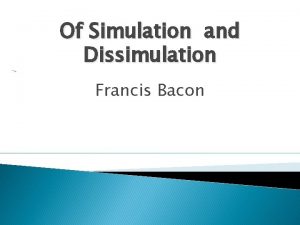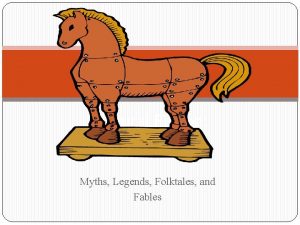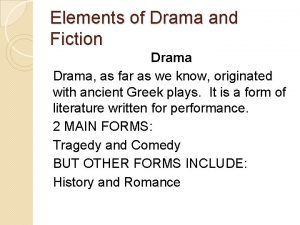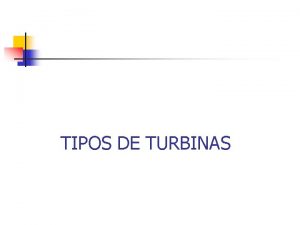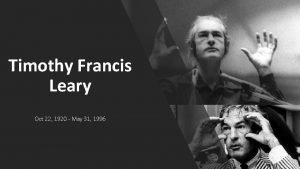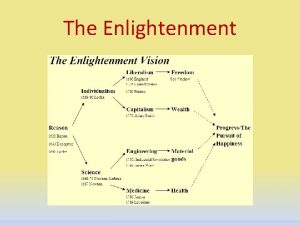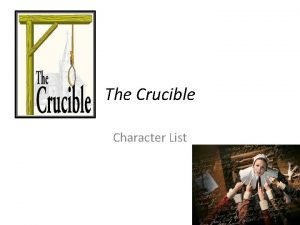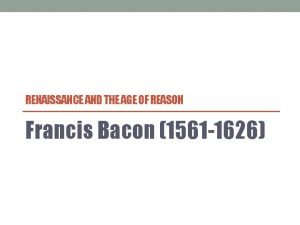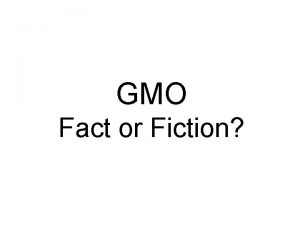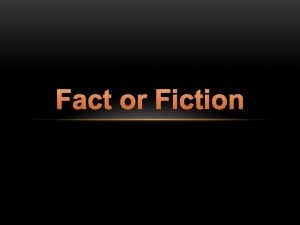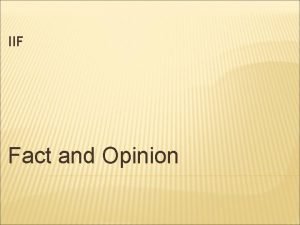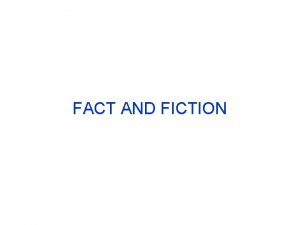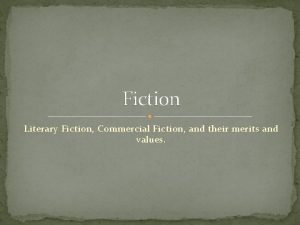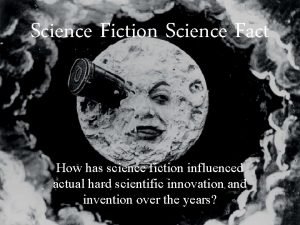Made in America Fact and Fiction Francis A

































- Slides: 33

Made in America Fact and Fiction Francis A. Citera | citeraf@gtlaw. com | 312. 456. 8413

The Surveys Say! • What do Americans say and believe about Made in USA? • Americans say they love U. S. -made goods. • They are less enthusiastic, however, about paying a premium for them. © 2017 Greenberg Traurig, LLP 2

2015 Consumer Reports Survey • According to a 2015 Consumer Reports survey, almost 8 in 10 American consumers say they would rather buy an American-made product than an imported one. • And more than 60 percent say they’re even willing to pay 10 percent more for it. © 2017 Greenberg Traurig, LLP 3

© 2017 Greenberg Traurig, LLP 4

© 2017 Greenberg Traurig, LLP 5

• More recently, a poll conducted May 24 -31, 2017 on behalf Thomson Reuters found 70 percent of Americans think it is “very important” or “somewhat important” to buy U. S. made products. • Despite this sentiment, 37 percent said they would refuse to pay more for U. S. -made goods. Twenty six percent said they would only pay up to 5 percent more to buy American, and 21 percent capped the premium at 10 percent. © 2017 Greenberg Traurig, LLP 6

• For the poll, a sample of roughly 2, 857 adults age 18+ was interviewed online in English. • The sample includes 1, 257 Democrats, 1, 004 Republicans, and 354 Independents. • The poll included 593 adults who made less than $25, 000 per year, 1, 283 who said they earned between $25, 000 and $74, 999, and 805 people who earned more than $75, 000. • Interestingly, the poll showed that lower income Americans were the most enthusiastic about buying U. S. goods. © 2017 Greenberg Traurig, LLP 7

• The good news for U. S. manufacturers is that the poll demonstrates that Americans like the quality of many domestic goods. • Thirty-one percent in the poll said American-made cars are the best in the world. • German cars were voted best by 23 percent of respondents. • And thirty-eight percent said U. S. -made clothes were best. © 2017 Greenberg Traurig, LLP 8

The Legal Landscape

• With a few notable exceptions, no law requires manufacturers and marketers to disclose the extent to which their products are made in the United States. • The exceptions are textile and wool products, fur products and Automobiles, which by law must disclose where they were made: • Textile Fiber Products Identification Act and Wool Products Labeling Act. • The Fur Products Labeling Act. • The American Automobile Labeling Act requires that automobiles manufactured on or after October 1, 1994 for sale in the United States bear a label disclosing where the car was assembled, the percentage of equipment that originated in the United States and Canada and the country of origin of the engine and transmission. © 2017 Greenberg Traurig, LLP 10

• However, manufacturers and marketers who choose to make claims about the amount of U. S. content in their products must comply with the FTC’s Made in USA policy. • The Federal Trade Commission (FTC) is charged with preventing deception and unfairness in the marketplace. • The FTC Act gives the Commission the power to bring enforcement actions against false or misleading claims that a product is of U. S. origin. © 2017 Greenberg Traurig, LLP 11

• Traditionally, the Commission has required that a product advertised as Made in USA be “all or virtually all” made in the U. S. • After a comprehensive review of Made in USA and other U. S. origin claims in product advertising and labeling, the Commission announced in December 1997 that it would retain the “all or virtually all” standard. • The Commission also issued an Enforcement Policy Statement on U. S. Origin Claims to provide guidance to marketers who want to make an unqualified Made in USA claim under the “all or virtually all” standard and those who want to make a qualified Made in USA claim. © 2017 Greenberg Traurig, LLP 12

• What factors does the FTC consider to determine whether a product is “all or virtually all” made in the U. S. A. ? • The product’s final assembly or processing must take place in the U. S. The Commission then considers other factors, including how much of the product’s total manufacturing costs can be assigned to U. S. parts and processing, and how far removed any foreign content is from the finished product. © 2017 Greenberg Traurig, LLP 13

• The FTC’s Policy Statement prohibits advertising a product as “Made in USA” (or equivalent statements) unless “all or virtually all” labor and materials are domestic. • Under the FTC Policy Statement, no more than a “negligible” amount of foreign content or processing is allowed for a product advertised as “Made in USA. ” © 2017 Greenberg Traurig, LLP 14

• “All or virtually all” means that all significant parts and processing that go into the product must be of U. S. origin. That is, the product should contain no – or negligible – foreign content. • The permissible amount of foreign content is not defined by the FTC. But the approach remains at least theoretically viable where a product’s foreign content is truly de minimis. © 2017 Greenberg Traurig, LLP 15

• However, the Policy Statement does allow a seller to use a limited or “qualified” form of claim to signal when part of the labor and material in a product is domestic and part is not. • An example might be to advertise that a fashion product is sewn in the United States using imported fabric. • Information about what kinds of claims are allowed or not allowed can be found at www. business. ftc. gov/documents/bus 03 -complying-madeusa-standard. • Some manufacturers are leery of this approach since the FTC’s guidance on what types of “qualified” claims are permissible is not always clear. © 2017 Greenberg Traurig, LLP 16

• A qualified Made in USA claim is appropriate for products that include U. S. content or processing but don’t meet the criteria for making an unqualified Made in USA claim. • A qualified Made in USA claim, like an unqualified claim, must be truthful and substantiated. © 2017 Greenberg Traurig, LLP 17

• A Made in USA claim can be express or implied. • Examples of express claims: • Made in USA. • “Our products are American-made. ” • “USA. ” © 2017 Greenberg Traurig, LLP 18

• In identifying implied claims, the Commission focuses on the overall impression of the advertising, label, or promotional material. • Depending on the context, U. S. symbols or geographic references may convey a claim of U. S. origin either by themselves, or in conjunction with other phrases or images. • Examples: • U. S. flags, • Outlines of U. S. maps, • References to U. S. locations of headquarters or factories © 2017 Greenberg Traurig, LLP 19

• In contrast, California had previously enacted a statute which, read literally, prohibited using a “Made-in-the-USA” claim if any part of the product is foreign-sourced. Cal. Bus. & Prof. Code § 17533. 7. © 2017 Greenberg Traurig, LLP 20

• On Sept. 1, 2015, California amended its statute. The new statute allows a manufacturer to advertise a product as "Made in the USA" as long as: • (1) the foreign components of the product do not "constitute more than 5% of the final wholesale value" of the product, or • (2) the manufacturer can show that it cannot obtain the foreign components of the product in the U. S. and those components "constitute not more than 10% of the final wholesale value" of the product • The amended statute took effect January 1, 2016. © 2017 Greenberg Traurig, LLP 21

• The amended California statute is now more in line with the FTC guidelines, which allow a product to be advertised as “Made in the USA” where “all or virtually all” the labor and materials in the product are domestic. • In other words, both the state and federal standards allow a bit of flexibility for small amounts of foreign content to be present in a product manufactured and marketed as “Made in the USA. ” © 2017 Greenberg Traurig, LLP 22

• A key difference, however, is that the FTC guidelines do not quantify the permissible amount of foreign content. Many commentators have interpreted the FTC guidelines to allow only a truly de minimis amount of foreign content, which, ironically, now may be less than California’s 5 percent and 10 percent levels. • Plus, it is not clear how to determine what the California statute means by 5 percent or 10 percent of "wholesale value, " though the most straightforward approach would be to compare the manufacturer’s cost for the foreign component(s) to the price the manufacturer charges to sell the completed product. © 2017 Greenberg Traurig, LLP 23

• As a practical matter, many domestic manufacturers of products with mixed foreign and domestic content are likely to continue the current practice of softening or “qualifying” their “Made in USA” claims by disclosing, for example, that the product is made in the U. S. with foreign and domestic materials. • Doing so is generally regarded as acceptable under both federal and state laws and avoids the need to worry about quantifying the exact amount of foreign content. © 2017 Greenberg Traurig, LLP 24

• The FTC can punish violators by initiating administrative lawsuits or investigating companies and demanding remedial measures. • The number of investigations regarding “Made in USA” claims appears to be on the rise. • The Commission issues an administrative complaint when it has “reason to believe” that the law has been or is being violated, and it appears to the Commission that a proceeding is in the public interest. • When the Commission issues a consent order on a final basis, it carries the force of law with respect to future actions. • Each violation of such an order may result in a civil penalty of up to $40, 654. © 2017 Greenberg Traurig, LLP 25

• Following public comment periods in two separate cases, the Federal Trade Commission in April approved final consent orders settling charges that i. Spring Water Systems, LLC, a Georgia-based distributor of water filtration systems, and Block Division, Inc. , a Texas-based distributor of pulley block systems, made misleading Made-in-the-USA claims. • The FTC’s complaint against i. Spring alleged that the company’s unqualified claims that its products are built in the United States deceived consumers. • In many instances – despite i. Spring’s false, misleading or unsupported claims – its products either are wholly imported or are made using a significant amount of inputs from overseas, according to the complaint. © 2017 Greenberg Traurig, LLP 26

• The FTC’s complaint against Block Division alleged that for a period of several years, the company’s pulleys featured imported steel plates that were stamped “Made in USA” before they entered the United States. • The complaint also alleged that Block Division used unqualified “Made in USA” claims in advertising to represent that these pulley blocks, other products, and the parts used to make them, were all or virtually all made in the United States. • In fact, the complaint states, the company’s products include significant imported parts that are essential to their function. © 2017 Greenberg Traurig, LLP 27

Closing Letter – An Example • As we have discussed, unqualified “Made in USA” or “Built in USA” claims likely suggest to consumers that products are “all or virtually all” made in the United States. • The Commission may analyze a number of different factors to determine whether a product is “all or virtually all” made in the United States, including: • The proportion of the product’s total manufacturing costs attributable to U. S. parts and processing, • How far removed any foreign content is from the finished product, • And the importance of the foreign content or processing to the overall function of the product. © 2017 Greenberg Traurig, LLP 28

• In this case, the Company sources significant inputs to many of its products overseas. • For example, 100% of the cost of materials used to make certain watches is attributable to imported materials. • Similarly, more than 70% of the cost of the materials used to make certain belts is attributable to imported materials such as decorative buckles. • Additionally, xxxxxx sources the steel used to make certain bicycle forks overseas. © 2017 Greenberg Traurig, LLP 29

• Accordingly, to avoid deceiving consumers, xxxxxx implemented a remedial action plan to account for this significant imported content by qualifying its representations. • Among other things, this plan includes: • (1) applying corrective hangtags and information cards to watches, bicycles, and other affected products to alert consumers to the fact that those products include significant imported content; • (2) redesigning watch casebacks; • (3) updating embossed claims in affected leather goods; • (4) updating Internet and hardcopy advertising materials to qualify claims; © 2017 Greenberg Traurig, LLP 30

• Among other things, this plan includes (continued): • (5) updating employee training materials; • (6) updating advertising materials distributed to third-party retailers; • (7) transitioning away from the Company's "Where American is Made“ slogan; • And (8) developing enhanced policies and procedures, including additional legal review, to avoid future deception or mislabeling. © 2017 Greenberg Traurig, LLP 31

• Though the FTC has taken a hard stance on “Made in USA” claims, some courts do not view “Made in USA” labels as written warranties under the Magnuson-Moss Warranty Act: • “Sears maintains that the phrase ‘Made in USA’ does not constitute a ‘written warranty’ because it does not affirm or promise that the material or workmanship is defect-free or will perform at a specified level over a specified time. We agree. The phrase is a product description that does not inform consumers that the tools are defect-free or make any representation about performance at a specified level over a specified time. ” © 2017 Greenberg Traurig, LLP 32

Thank You.
 What is fiction
What is fiction Fiction vs nonfiction
Fiction vs nonfiction It is a genre of speculative fiction
It is a genre of speculative fiction Contemporary realistic fiction vs historical fiction
Contemporary realistic fiction vs historical fiction There are no transitional fossils fact, fiction or opinion
There are no transitional fossils fact, fiction or opinion Rap of the states
Rap of the states Asia europe north america
Asia europe north america Whats an onomatopeia
Whats an onomatopeia Why is latin america called latin america
Why is latin america called latin america Performance e body art
Performance e body art Of simulation and dissimulation text
Of simulation and dissimulation text Summary of simulation and dissimulation
Summary of simulation and dissimulation Act three the crucible
Act three the crucible 8.04 modern fiction and nonfiction
8.04 modern fiction and nonfiction English language paper 1 fiction and imaginative writing
English language paper 1 fiction and imaginative writing Brer possum's dilemma
Brer possum's dilemma Cause and effect non fiction
Cause and effect non fiction Similarities between flash fiction and short story
Similarities between flash fiction and short story The pit and the pendulum plot diagram
The pit and the pendulum plot diagram Drama microfiction
Drama microfiction Venn diagram of short story and novel
Venn diagram of short story and novel Fiction and nonfiction venn diagram
Fiction and nonfiction venn diagram What is fiction in science
What is fiction in science Elements of fiction and nonfiction
Elements of fiction and nonfiction Rotor kaplan
Rotor kaplan Timothy francis leary
Timothy francis leary Francis bull great gatsby
Francis bull great gatsby Francis bacon enlightenment ideas
Francis bacon enlightenment ideas Crucible act 1 characters
Crucible act 1 characters Contoh halaman francis modul
Contoh halaman francis modul St francis hospital escanaba mi
St francis hospital escanaba mi Knowledge is power bacon
Knowledge is power bacon Real private ryan
Real private ryan Francis bacon
Francis bacon










